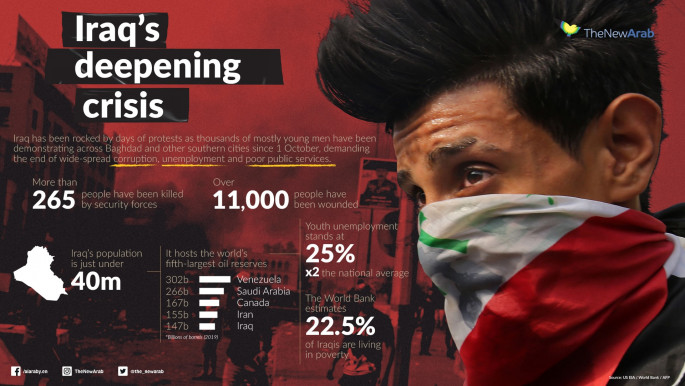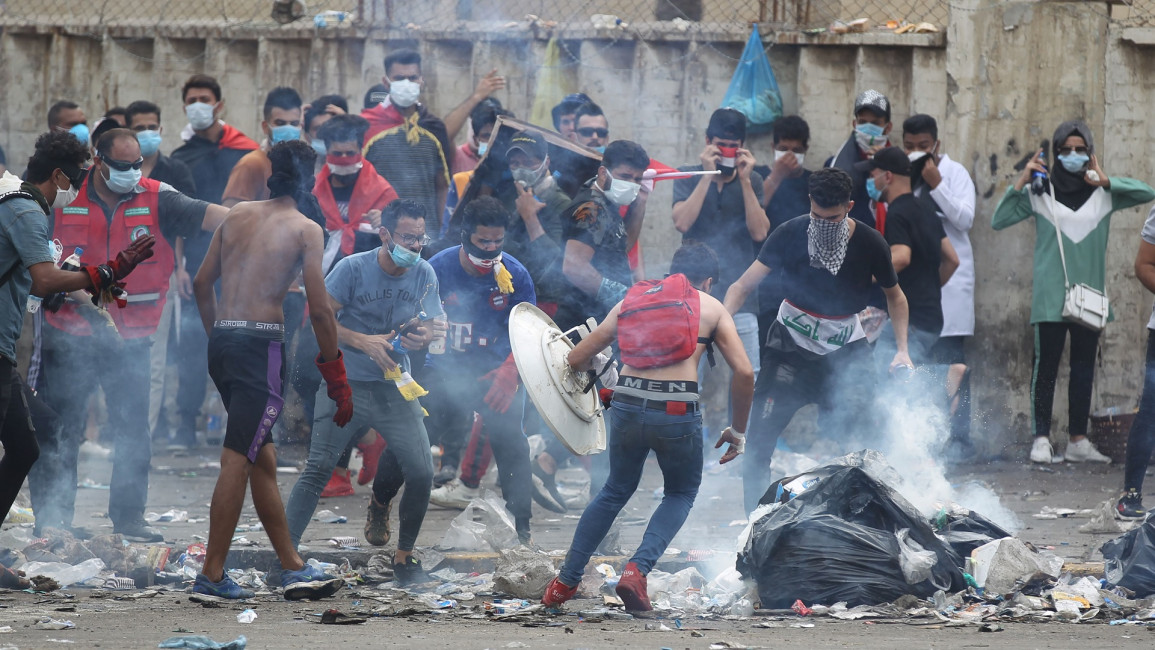Iranian tear gas grenades causing 'savage' protester deaths, injuries in Iraq, Amnesty says
The human rights group has said that a "significant portion" of the brutal tear gas grenades directed at protesters are M651 and M713 grenades manufactured by Iran's Defense Industries Organisation (DIO).
The DIO is a state-owned weapons manufacturer.
Baghdad has close but complicated ties with its eastern neighbour Iran, with whom it fought a deadly war in the 1980s but which now has significant political and economic sway in Iraq.
Many Iraqis protesting over the past month accuse Iran of being one of the primary sponsors of the corrupt, inefficient system they want to overthrow.
Powerful Iran-linked militias have also been accused of mounting attacks against demonstrators over the past few weeks.Amnesty has also identified Serbian tear gas grenades used against protesters.
Both the Iranian and Serbian models are modelled on military grenades and are up to 10 times as heavy as standard tear gas canisters used elsewhere, the human rights group said.
Standard tear gas munitions can already prove deadly if aimed directly at people, particularly if at the head, but such military-grade grenades are even more so, causing a spate of protester deaths and catastrophic injuries in Iraq.
Iraqi activists have accused the security services of aiming the grenades directly at the heads of protesters. Horrific footage depicting smoking grenades lodged in the heads of unconscious demonstrators has also been shared on social media.
"All the evidence points to Iraqi security forces deploying these military-grade grenades against protesters in Baghdad, apparently aiming for their heads or bodies at point-blank range," Lynn Maalouf, Amnesty's Middle East Research Director, said.
"This has had devastating results, in multiple cases piercing the victims' skulls, resulting in gruesome wounds and death after the grenades embed inside their heads."
Eyewitnesses told the human rights group that riot police had earlier in October used hand-thrown tear gas canisters, but later switched to firing the grenades around 25 October.
Up to 10 grenades are fired at a time into crowded areas, emitting a smoke that reportedly smells different from standard tear gas, multiple witnesses said.
Comment: Tuk-tuks of Tahrir: The unlikely symbol of a revolution in Iraq
"One landed close to me and I could barely breathe. It was like my chest was broken. The medical volunteers gave me a ventilator," one female protester described. "I think I would have died."
A male protester added: "Since 25 October, the anti-riot [police] has not stopped launching tear gas... into the crowd, whether provoked or not. It is continuous and random.
"They are not using them to disperse, they are using them to kill. All the deaths in Baghdad have been from these canisters going inside the protesters' bodies."
A medical volunteer described the firing of tear gas grenades at civilians as "savage".
"As both the police and military grenades are fired with a similar muzzle velocity, meaning they travel through the air at the same speed, the grenades that weigh 10 times as much deliver 10 times the force when they strike a protester," Brian Castner, Amnesty's Senior Crisis Adviser on Arms and Military Operation, said.
"This is why they have caused such horrific injuries."
Experts interviewed by the human rights group described the use of the military-grade tear gas grenades as "unprecedented".
 |
At least 10 people were killed in the southern Iraqi city of Basra and the nearby port of Umm Qasr on Friday.
Most of the casualties were due to live gunfire, and Iraqi security forces have also burned tents belonging to protesters.
Another six demonstrators were killed on Thursday in the capital Baghdad and Amarah.
In a speech read out on his behalf on Friday in the Shia holy city of Najaf, Iraq's foremost Shia cleric, Grand Ayatollah Ali Sistani, praised protesters while holding Iraqi security forces responsible for their deaths.
Follow us on Twitter and Instagram to stay connected

